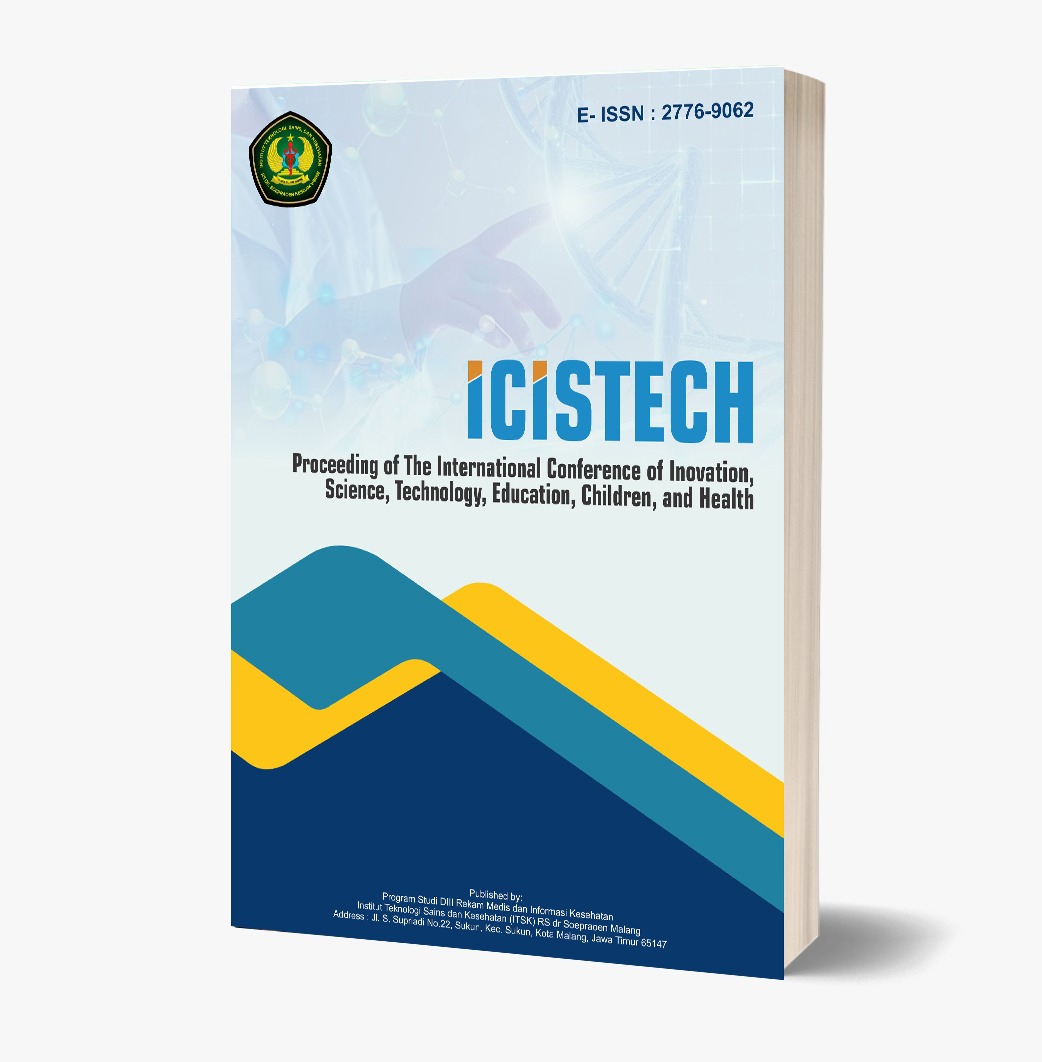Implementing the 2030 Bilingual Education Policy in Indonesian Private Schools: A Case Study of Santo Yoseph Catholic High School
DOI:
https://doi.org/10.62951/icistech.v5i1.273Keywords:
Bilingual Education, Trained Teachers, Foreign Teachers, Concerned Issues, Local and Indigenous LanguagesAbstract
Since the launch of the “Bilingual Policy for all schools supported by Yayasan Pendidikan Katolik (YPK) Don Bosco KAM in 2030,” schools have debated its impact. Teachers of non-English subject express concern about adapting, while parents fear their children may struggle with bilingual instruction. This study investigates how students, teachers, parents, and staff at Private Senior High School of Santo Yoseph Medan perceive the Bilingual education policy decided by YPK Don Bosco KAM in 2030. The research explores key concerns: the necessity of the policy, its effect on local languages, feasibility by 2030, budget sufficiency, availability of qualified teachers, and whether non-English subject teachers can teach bilingually. A questionnaire with seven questions was distributed to 40 participants in Indonesian and later translated into English. Results show 60% believe bilingual education is essential, 10% disagree, 25% are uncertain, and 5% have no opinion. While over half support the policy, challenges remain, including limited funding, a shortage of trained bilingual teachers, and the need for more English classes and learning materials. Successful implementation requires the Don Bosco Catholic Education Foundation to increase funding and address these challenges to ensure smooth integration of bilingual education by 2030.
References
[1] A. Rappa, "English in Southeast Asia: A language of wider communication," in *The Handbook of World Englishes*, 2nd ed., Wiley-Blackwell, 2010, pp. 299–313.
[2] Apriana and A. Sutrisno, "Bilingualism in Indonesian children’s language acquisition," *J. Lang. Lit.*, vol. 22, no. 2, pp. 458–465, Sep. 2022, doi: 10.24071/joll.v22i2.4195.
[3] B. Kachru, *The Other Tongue: English Across Cultures*, 2nd ed. Chicago: Univ. Illinois Press, 1992.
[4] Baker, *Foundations of Bilingual Education and Bilingualism*, 5th ed. New York: Multilingual Matters, 2011.
[5] Crawford, *Educating English Learners: Language Diversity in the Classroom*, 5th ed. Los Angeles: Bilingual Education Services, 2004.
[6] Cummins, *Language, Power, and Pedagogy: Bilingual Children in the Crossfire*. New York: Multilingual Matters, 2000.
[7] del M. Sánchez-Pérez and F. Manzano-Agugliaro, "Worldwide trends in bilingual education research: A half-century overview," *Educ. Sci.*, vol. 11, no. 11, p. 730, Nov. 2021, doi: 10.3390/educsci11110730.
[8] García and C. Baker, *Bilingual Education: An Introductory Reader*. New York: Multilingual Matters, 2006.
[9] Genesee and P. Gandara, "Bilingual education: Policies, practices, and the future," in *The Handbook of Bilingual Education*, Wiley-Blackwell, 2010, pp. 10–27.
[10] Genesee, "Bilingual first language acquisition," in *Bilingualism: Language and Cognition*, Cambridge: Cambridge Univ. Press, 2008, pp. 3–19.
[11] Gibbons, *Scaffolding Language, Scaffolding Learning: Teaching English Language Learners in the Mainstream Classroom*, 2nd ed. Portsmouth: Heinemann, 2015.
[12] González, *Teaching Heritage Languages in the 21st Century: A Practical Guide for Teachers and Program Administrators*. London: Routledge, 2014.
[13] J. Huang and K. Starosta, "The role of language in the bilingual education of minority students: A study of two programs," *Biling. Res. J.*, vol. 40, no. 3, pp. 327–341, 2017.
[14] K. N. Manik et al., "Javanese nomads’ language attitude towards Javanese and Batak Toba languages," *Int. J. Humanit. Educ. Soc. Sci. (IJHESS)*, vol. 3, no. 3, Dec. 2023, doi: 10.55227/ijhess.v3i3.654.
[15] Kirkpatrick, "English as a lingua franca in ASEAN: A multilingual perspective," in *English in Southeast Asia: Features, Policy and Language in Use*, Amsterdam: John Benjamins, 2012, pp. 19–37.
[16] Lee, "Interdisciplinary collaboration in English language teaching: Some observations from subject teachers’ reflections," *Reflections Engl. Lang. Teach.*, vol. 7, no. 2, pp. 1–12, 2008. [Online]. Available: https://api.semanticscholar.org/CorpusID:11740196
[17] Lin and Y. He, "Does bilingual instruction impact students’ academic performance in content-based learning? Evidence from business school students attending bilingual and L1 courses," *Sustainability*, vol. 11, no. 1, p. 263, Jan. 2019, doi: 10.3390/su11010263.
[18] M. Waris, "Code switching and mixing: Communication in learning language," *J. Dakwah Tabligh*, vol. 13, no. 1, pp. 123–135, 2012.
[19] Marliana, M. Murwati, and T. Rahayu, "The importance of learning a second language acquisition started from 5 years old," *J. Innov. Educ.*, vol. 2, no. 3, pp. 317–327, Jul. 2024, doi: 10.59841/inoved.v2i3.1584.
[20] Muniroh et al., "Challenges in managing bilingual schools: A solution through higher education for prospective leaders," *Eur. J. Educ. Res.*, vol. 11, no. 4, pp. 2513–2522, Oct. 2022, doi: 10.12973/eu-jer.11.4.2513.
[21] N. H. Hornberger, "Extending bilingual education: A sociolinguistic perspective," in *Bilingual Education: An Introductory Reader*, O. García and C. Baker, Eds. New York: Multilingual Matters, 1991, pp. 99–121.
[22] N. H. Hornberger, "Frameworks and models in bilingual education," in *Bilingual Education: An Introductory Reader*, O. García and C. Baker, Eds. New York: Multilingual Matters, 2006, pp. 1–20.
[23] N. Manik et al., "Higher education language translation practices in North Sumatra: Case study of lecturer and student perceptions," *Int. J. Humanit. Educ. Soc. Sci. (IJHESS)*, vol. 3, no. 4, Feb. 2024, doi: 10.55227/ijhess.v3i4.823.
[24] N. V. Huy, N. T. Nam, and B. N. Bon, "The importance of speaking in English as a foreign language between skillful and thoughtful competencies: Studying sociolinguistics perspectives," *Int. J. Engl. Lang. Stud.*, vol. 6, no. 2, pp. 153–159, Jun. 2024, doi: 10.32996/ijels.2024.6.2.22.
[25] N. Xia, "The impact of bilingual education on young children’s cognitive development," *Trans. Soc. Sci. Educ. Humanit. Res.*, vol. 11, pp. 919–928, Aug. 2024, doi: 10.62051/p2j7f435.
[26] O. D. La Garza, E. Mackinney, and A. L. Lavigne, "Dual language instruction and achievement: A need and a void in the Midwest," *Mid-Western Educ. Res.*, vol. 27, no. 4, pp. 363–382, 2015.
[27] O. García and L. Wei, *Translanguaging: Language, Bilingualism and Education*. London: Palgrave Macmillan, 2014. doi: 10.1057/9781137385765.
[28] O. García and T. Kleyn, *Translanguaging with Multilingual Students: Learning from Classroom Moments*. New York: Routledge, 2016.
[29] P. Thomas and V. P. Collier, *A National Study of School Effectiveness for Language Minority Students’ Long-Term Academic Achievement*. Hawaii: Center for Research on Education, Diversity & Excellence, 2002.
[30] Perez Peguero, "The impact of technology-enhanced language learning on bilingual education," *Int. J. Sci. Res. Manag. (IJSRM)*, vol. 12, no. 4, pp. 3340–3350, Apr. 2024, doi: 10.18535/ijsrm/v12i04.el05.
[31] Sama, M. Doi, and F. F. I. Wanggai, "Bilingual instructions of Indonesian primary schools in Endenese community," *Exposure: J. Pendidik. Bahasa Inggris*, vol. 12, no. 2, pp. 239–249, Nov. 2023, doi: 10.26618/exposure.v12i2.11884.
[32] T. Skutnabb-Kangas, "Language and education: The need for bilingual education," in *Linguistic Human Rights: Overcoming Linguistic Discrimination*, Berlin: Mouton de Gruyter, 2000, pp. 244–266.
[33] W. Dharma de Astika, *Bilingual Education in Indonesia: A Study of Policy and Practice*. Kuala Lumpur: Univ. Malaya Press, 2009.
Downloads
Published
How to Cite
Issue
Section
License
Copyright (c) 2025 Proceeding of The International Conference of Inovation, Science, Technology, Education, Children, and Health

This work is licensed under a Creative Commons Attribution-ShareAlike 4.0 International License.













